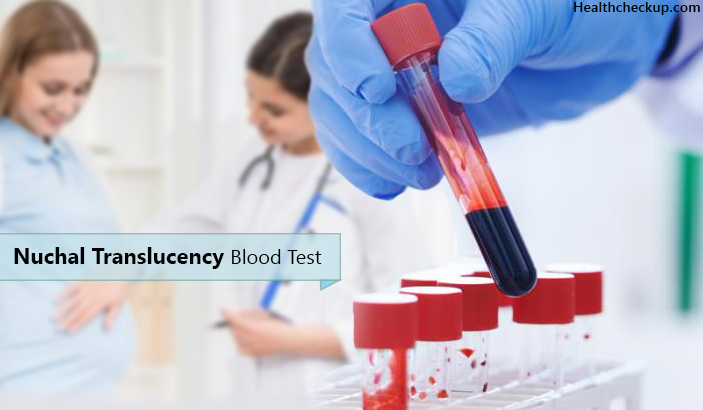Pregnancy is a very important phase of not only women’s life but for the entire family. Every mother and family wants healthy disease free child and this is natural. So certain tests are available which can detect any chromosomal diseases like Down Syndrome, Edward Syndrome, Patau syndrome, etc before the birth of baby, in the fetal life.
Nuchal Translucency Test is one of the tests used to determine these chromosomal abnormalities. It is actually a combination of ultrasound finding correlated with blood reports.
Purpose of Nuchal Translucency Test
It is done to determine whether the baby has Down’s syndrome or Edward syndrome or Patau syndrome. All these are genetic diseases associated with a chromosomal abnormality.
Down’s syndrome is associated with chromosome 21 (trisomy – three chromosomes instead of two), Edward’s syndrome is trisomy of 18th chromosome while patau syndrome is trisomy 13 chromosome.
Best Time For Nuchal Translucency Test
It should be done in the first trimester of pregnancy. In many countries like India, it is mandatory to have this test done. It can be done between at the earliest at 10 the week and late at 13th week. After 14 weeks, the lymph system of the baby develops, making the fluid naturally drain away, meaning the test can no longer be done. Best time for this test is the 12th week of pregnancy.
[Read – Medical Tests During Pregnancy]
Parts of Nuchal Translucency Test
- Ultrasound Part – In this baby’s skin layer around the back of the neck (nuchal area) is measured via ultrasound. In Down syndrome, because of lymphatic drainage problem, the skin layer thickness is more than normal babies. So higher skinfold thickness can be found in downs syndrome.
- Blood Test – At the time of ultrasound at 12 weeks, your gynecologist will also send you for blood tests, free beta HCG (Human Chorionic Gonadotropin) and PAPP-A (Pregnancy-Associated Plasma Protein A).
Why Nuchal Translucency Test needs both Ultrasound and Blood Test
- In some countries, pregnant women offer the choice if she wants only ultrasound without any blood reports for nuchal translucency Test. But the scientific purpose of combining ultrasound and blood tests is to get higher accuracy.
- Ultrasound alone is only 75% accurate in diagnosing above mentioned chromosomal abnormalities. When combined with blood tests, accuracy goes to 85-90%. So in most of the countries ultrasound combined with a blood test is advised.
Preparation For nuchal translucency Test
- A pregnant female is called for an ultrasound at the 12th week of pregnancy. By ultrasound probe, the thickness of the skin layer of the nuchal area of a baby is determined. This value is conveyed to the laboratory.
- Just before the ultrasound, a blood sample for free beta HCG and PAPP-A proteins are collected. Values of beta HCG and PAPP-A and nuchal skin layer thickness is calculated and we get the results.
- This test does not require fasting or any specific time of the day.
[Read – Blood Tests That Require Fasting]
Procedure For Nuchal Translucency Test
- You will be called by your gynecologist for a routine ultrasound of your baby.
- The gynecologist will order blood report just before the ultrasound. So you have to first give a blood sample for free beta HCG and PAPP-A tests.
- Then Gynecologist will measure nuchal skin layer thickness and convey your result to a laboratory where the final report will be given.
Nuchal Translucency Test Results and Interpretation
- Generally, the larger the measurement of nuchal skin layer, the greater the chance the baby may have a genetic disorder.
- However, there is no ‘normal’ measurement because it varies widely between babies, and can even vary for different pregnancies in the same woman. The measurements are also interpreted in relation to each woman’s age.
- As a guide, the ‘top’ level of normal tends to be somewhere between 2 to 3 millimeters (mm), with above 3mm definitely being larger than normal.
- The nuchal translucency measurement (+/- the blood test results), along with the woman’s age and the estimated age of the baby (measured by ultrasound) are combined to calculate a ‘risk figure’, or the chances of the baby having a genetic disorder.
- The result may be given as just ‘low risk’ or ‘high risk’ or you may be given the neck measurement and a specific figure expressed as an ‘odd’.
- A ‘low risk’ is considered more than 1:300 (for example, 1:400), a ‘high risk’ is considered less than 1:300 (for example, 1:30).
- Nuchal translucency is only a screening test, it aims to identify babies that may be at increased ‘risk’ (or have a higher chance) of having a genetic disorder, but it cannot definitely tell if the baby does have a genetic disorder.
- Nuchal translucency alone is about 75% accurate, but if it is combined with a blood test, this increases the accuracy of up to 85% to 90%. This means that around 10 to 15% of babies with a genetic disorder such as Down Syndrome will be missed, meaning the woman will be estimated as ‘low risk’ and yet still carry a baby with a genetic disorder.
- About 5% (or 1:20) women will be estimated as ‘high risk’, yet most of these babies will be very healthy and normal (this is called a ‘false positive result’).
- This test does not tell anything about the gender of the baby. Also, the baby’s gender has no impact on nuchal translucency Test.

Dr. Kaushal M Bhavsar pursued his MD in Pulmonology. He is an Assistant Professor in Pulmonary Medicine, GMERS Medical College, Ahmedabad









